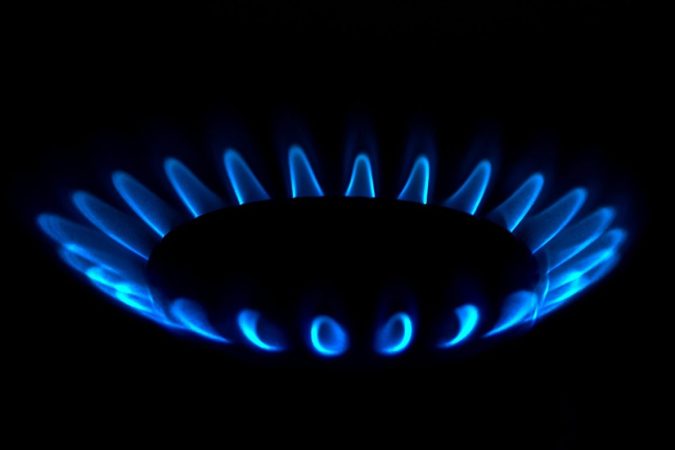Dominion Energy Virginia has long been warning, albeit somewhat quietly, that the dream of running Virginia’s economy on nothing but solar, wind and battery power was not based on reality. With the filing of its most recent integrated resource plan (IRP) on May 1, proposing how to meet customer needs out 25 years, it has made those warnings concrete.
The alternative plan that the company seems to be pointing to as preferred includes adding natural gas generation as early as 2028, an idea not even hinted at in the previous plan just a year ago. It wants to add 2,900 megawatts of new gas plants in all. That proposal will prove anathema to the climate alarmism movement that imposed the Virginia Clean Economy Act just three years ago, demanding carbon-emissions free electricity by 2045.
The previous 2022 plan did include the possibility of the utility building additional nuclear generation, with the first of four small modular reactors proposed to come online about 2042. This plan advances that schedule by eight years, to 2034, and calls for six reactors in all with 1,600 megawatts of capacity.
On the same day, Dominion also announced an application to change how it will collect fuel costs from customers, and some changes in the structure of its base rates and rate adjustment clauses. The radical turn in the IRP is the bigger news, however. Future columns will address those other two proposals.
Release of the IRP was followed that evening by a news release praising it from Governor Glenn Youngkin (R), something that normally doesn’t accompany these bureaucratic undertakings. But Youngkin has pinned his political fortunes to what he calls the “moon shot” of introducing more nuclear power into Virginia’s mix, and his 2022 energy plan also supported continued and even expanded use of natural gas to maintain system reliability. Dominion did both.
The review process will take months and may not be complete until after the November elections. Virginia Democrats are firmly opposed to and have voted down efforts to delay retiring the existing natural gas plants, let alone adding new ones. The fate of that idea may rest with the voters.
Youngkin and the Dominion plan summary point to two major developments since last year’s IRP discussion. First is the revised demand forecast by the regional electricity marketplace PJM, showing far greater growth in the data center industry and the need for more electricity as transportation and other sectors abandon fossil fuels under climate alarmism pressures. Second was a close call just before Christmas as demand for energy spiked in a cold spell, with PJM’s members almost replicating the blackout problems Texas suffered a few years back.
The Governor’s release stated:
The threat of premature (fossil fuel plant) retirements, and the resulting reduction to baseload and dispatchable generation capacity they produce, is magnified when the outsized load growth of Virginia is evaluated. PJM’s revised load forecast reveals that Dominion’s load will grow at 5% annually – higher than annual growth projected for Virginia when the Clean Economy Act was evaluated, and multiples of the 1% annual growth projected for the entire PJM region in the revised forecast.
As we explained last fall, there is a significant mismatch between supply and demand in the VCEA framework. Baseload generation provides the energy backbone to Virginia’s economy, and it would be a huge mistake to turn it off without an achievable plan to replace it…Our regulated utilities have the responsibility to ‘keep the lights on.’”
Adding the new SMR nuclear capacity and natural gas capacity allows Dominion to propose either building or buying substantially less solar capacity. The preferred 2022 plan projected adding almost 26 gigawatts of solar but this new plan trims that to below 20 GW. Both the 2022 and 2023 plans include the second phase of the Coastal Virginia Offshore Wind project, another 2.6 gigawatts, coming online in the early 2030s. But the 2023 plan, for the first time, also includes more than 600 megawatts of onshore wind turbines.
As before, Dominion offered five alternatives in all, one intended to be “least cost” and showing no concern for reducing CO2 emissions, and then two that achieve a claimed zero emissions by the VCEA target date of 2045. Interestingly, the zero carbon alternatives rely on even more nuclear power to balance demand with supply. The least cost plan adds no nuclear but far more natural gas generation. What are Virginians willing to pay for miniscule, too-tiny-to-matter reductions in worldwide CO2 levels?
The 2023 plan also increases the amount of planned battery storage, from 3070 megawatts in the earlier plan to more than 5,000 megawatts in this one. Perhaps recognizing the limits of battery technology, the 2023 plan also projects major purchases of power from other utilities, reaching the level of 4 GW per year in the out years. The 2022 plan didn’t show a shortfall until 2044. The 2023 plan shows shortfalls in all five alternatives, some of them massive.
The customer cost projections on the 2023 option adding new natural gas and nuclear power does not change much between the 2022 and 2023 document. Another change since last year, of course, is the federal Inflation Reduction Act changing all the federal tax credits and subsidies for nuclear and renewable energy. The details on how they impacted these calculations may emerge as the IRP review proceeds.
Dominion calculates the future cost one way, the State Corporation Commission uses another method, with the difference apparently being how they account for the impact of load growth. With so many assumptions, both must be taken as just estimates, but the trend lines are both steadily up.
Last year Dominion projected a residential bill on 1,000 kilowatt hours per month would reach $177 by 2035, and now it has lowered that to $174. (The actual bill was under $117 three years ago.) The earlier estimate using the SCC’s method was $213 and now it projects that bill reaching $235 by 2035. Yes, the SCC methodology has bills doubling between 2020 and 2035.
Keep those long term cost projections in mind with all the hoopla you will hear during this election year about some temporary changes in your bills (your bills, not your total costs) due to the proposed changes in how the fuel costs are recovered and in rate adjustment clauses. More information on those will follow soon.

Steve Haner is Senior Fellow with the Thomas Jefferson Institute for Public Policy. He may be reached at steve@thomasjeffersoninst.org.






